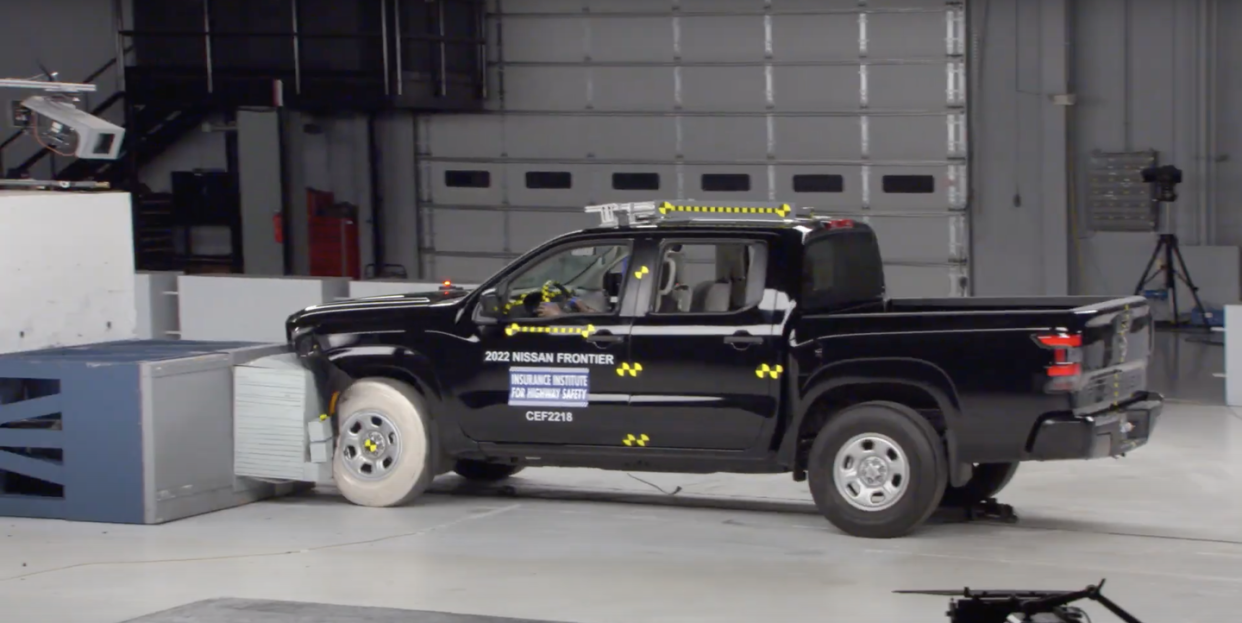No Mid-Size Truck Earns Top Marks in IIHS's Rear-Seat Safety Testing

The IIHS (Insurance Institute for Highway Safety) just released a bleak report on the rear-seat safety of mid-size crew-cab pickup trucks.
Among the Chevy Colorado, Ford Ranger, Jeep Gladiator, Nissan Frontier, and Toyota Tacoma, none received the top "Good" rating.
The updated test adds a dummy in the rear seat behind the driver in an effort to encourage automakers to improve rear-seat protection.
The IIHS released updated crash-test results that show mid-size trucks struggle to protect rear-seat passengers in front-end collisions. In fact, of the five pickups tested, which include the Chevy Colorado, Ford Ranger, Jeep Gladiator, Nissan Frontier, and Toyota Tacoma, none received the top "Good" rating from the test. An IIHS report last month showed similar results for compact passenger cars.
IIHS safety ratings are broken down into four categories. The Good rating is the best available, followed by Acceptable, Marginal, and Poor. Of the five pickups, the Frontier did the best, earning an Acceptable rating. The Ranger followed with a Marginal rating, and the Colorado, Gladiator, and Tacoma all earned Poor ratings.
The less-than-stellar ratings for the mid-size-truck segment stem from a lack of protection offered to rear occupants, as opposed to front-seat occupants. “A common problem was that the rear passenger dummy's head came dangerously close to the front seatback, and in many cases, dummy measurements indicated a risk of neck or chest injuries," said IIHS President David Harkey. "All these things tell us that the rear seat belts need improvement.”

The ratings also come on the heels of a more thorough test developed by the IIHS, which adds a dummy behind the driver's seat. While the driver dummy is the size of an average adult man, the rear dummy is the size of a small woman or 12-year-old child. According to the IIHS report, researchers also developed new metrics that focus on the injuries most frequently seen in back-seat passengers.
In the updated test, the Colorado, Frontier, Ranger, and Tacoma allowed the rear dummy’s head to come too close to the front seatback. The rear dummy in the Ranger did what the IIHS refers to as "submarining," which causes the seatbelt to ride up from the pelvis to the abdomen, increasing the risk of internal injuries.
According to the report, information taken from the rear dummy indicated a moderate or likely risk of both neck and chest injuries in the poor-rated Colorado, Gladiator, and Tacoma and a moderate risk of chest injuries in the marginal-rated Ranger.
You Might Also Like

 Yahoo News
Yahoo News 
